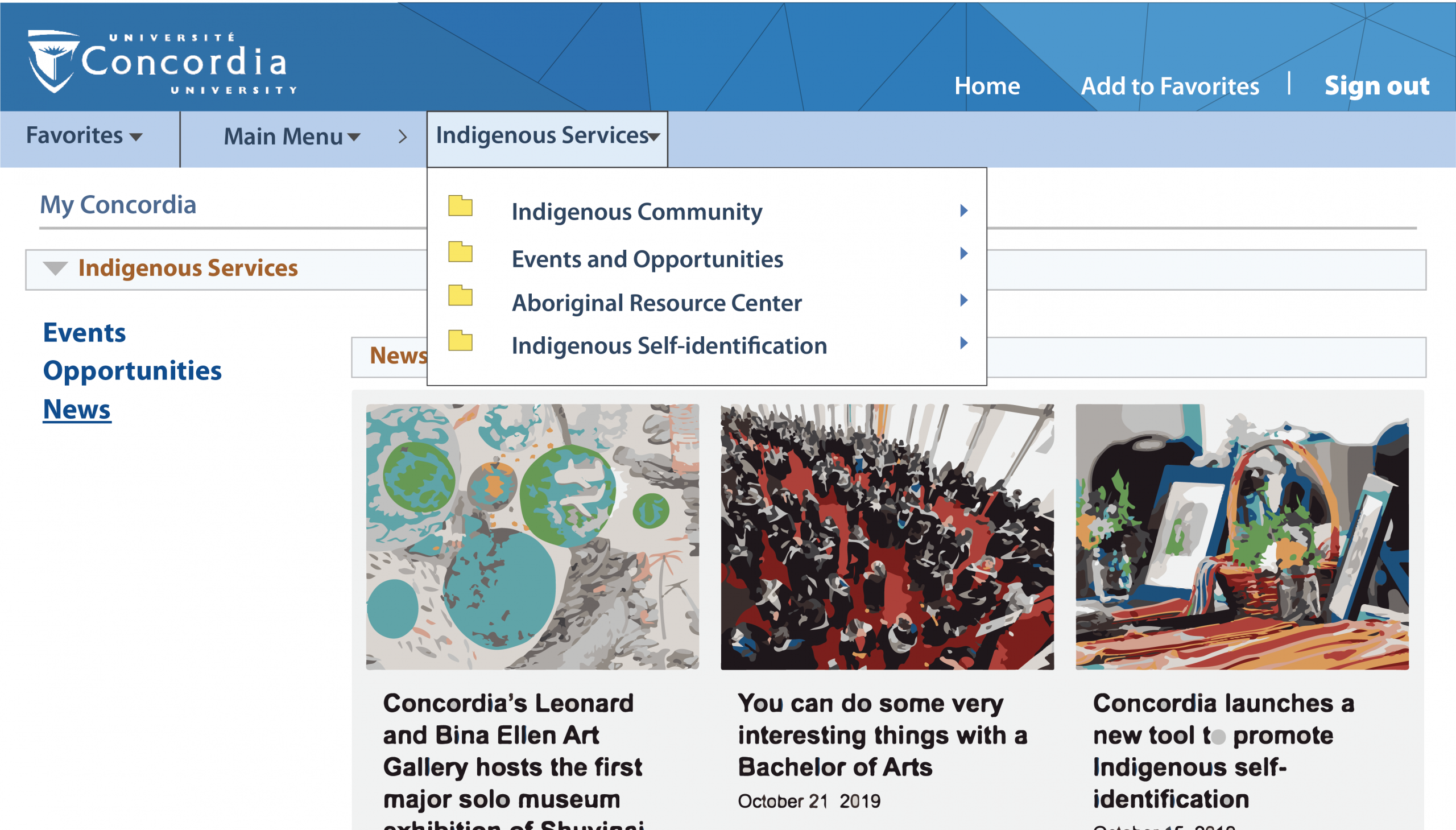“We are all working together towards greater retention, and that is done through support,” said Catherine Richardson, director of Concordia’s First Peoples Studies program.
Concordia has launched a new tool for Indigenous self-identification through MyConcordia. On the “My Student Centre” page, on the bottom left hand side under the personal information headline, there is the optional “Indigenous Self-Identification” link.
“There has been a high drop out rate of Indigenous students due to racism in the classroom and in the institution,” said Catherine Richardson, director of the First Peoples Studies program. “We are all working together towards greater retention, and that is done through support.”
Richardson explained that if she, who is Métis, was a student at the time of this new Self-Identification process, the support she would have gotten through it would probably encourage her to stay in school if she fell behind or had troubles.
Richardson said the staff could be present and be able to advocate for her if she had an issue with a professor for example. Or, “if there was a funeral in my community that I needed to attend, they would help me make arrangements with the professor.”
“For a long time, Indigenous students and those ‘taking care of the students’ did not want them to have to self-identify because there was too much risk of stigmatization and racism,” continued Richardson. “The ASRC offers a safe space, cultural safety and opportunities to form friendships and connections away from home, with a higher sense of mutual understanding.”
Concordia Spokesperson Vannina Maestracci said in an email to The Concordian that this new tool is used to connect students to culturally relevant resources and support on campus. According to Maestracci, the inputted information will be kept confidential and will only be available to select staff at the Aboriginal Student Resource Centre (ASRC) and the Office of the Registrar.
“There are more reasons to identify other than to merely be used as a diversity statistic by the institution,” said Richardson. “There are more scholarships available for Indigenous students, particularly at the masters and doctoral level.”
On top of scholarships, the identification tool could also give students the opportunity to have access to specialized services, bursaries and trips to conferences.
Richardson said the ASRC holds an Indigenous graduation celebration as well. Students don’t need to be formally identified to the university in order to participate, but it is through this identification process and the ASRC that the staff reaches out to students.
Richardson said knowing the number of Indigenous students is important for groups such as the Indigenous directions leadership group. Once given this information, the group could properly and more strongly advocate for the students when made aware of their background and general number, and they would, therefore, be better able to attend to their potential needs. She added that this identification also gives Indigenous students access to jobs related to Indigenous research projects, such as First Voices Week.
Graphic by Victoria Blair




